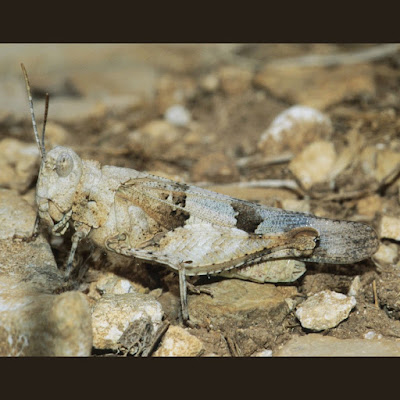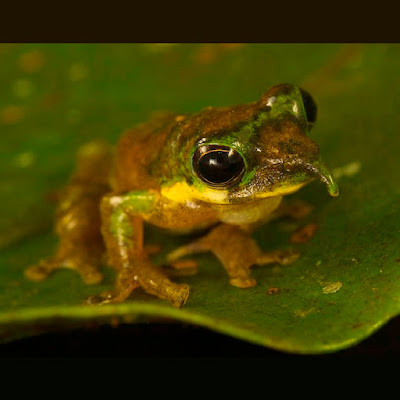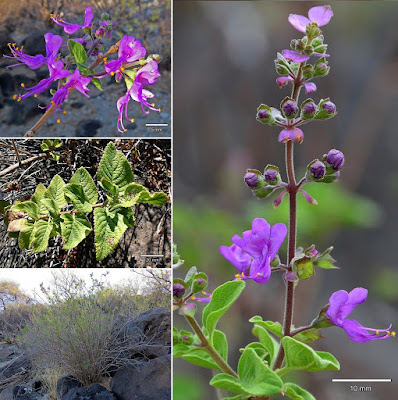[Most Recent Entries] [Calendar View]
Saturday, June 8th, 2019
| Time | Event | ||||||||||
| 1:25p | [Entomology • 2019] Oedipoda cynthiae • A New Rare Species of Oedipoda Latreille, 1829 (Orthoptera: Acrididae) from South Italy
Abstract Oedipoda cynthiae n. sp. (Orthoptera: Acrididae: Oedipodinae) is described from Apulia (South Italy). In the past, the same population here considered had been assigned to O. miniata and later to O. charpentieri. Morphological features, biogeographical considerations, and a preliminary molecular analysis confirm that this population must be assigned to a new species, which is described and illustrated here. Keywords: Orthoptera, Mediterranean, Apulia, Taxonomy, Affinities Paolo Fontana, Filippo Maria Buzzetti and Bruno Massa. 2019. A New Rare Species of Oedipoda Latreille, 1829 (Orthoptera: Acrididae) from South Italy. Zootaxa. 4614(1); 50–60. DOI: 10.11646/zootaxa.4614.1.2 | ||||||||||
| 1:31p | [Herpetology • 2019] Litoria pinocchio • Systematics of New Guinea Treefrogs (Litoria: Pelodrydidae) with Erectile Rostral Spikes: An Extended Description of Litoria pronimia and A New Species from the Foja Mountains
Abstract A small number of treefrog species (Litoria) from Melanesia are unusual amongst Anura in having distinctive fleshy rostral spikes. Here, we first present an extended description for Litoria pronimia Menzies, a small species that is widespread along the southern edge of the Central Cordillera of New Guinea, and in which males have a long and erectile rostral spike. Second, we describe Litoria pinocchio sp. nov. a new, morphologically similar, yet geographically disjunct species from the Foja Mountains in northern Papua Province, Indonesia. The new species differs from Litoria pronimia in aspects of body shape, proportions and colouration. A review of variation in the size, structure and degree of sexual dimorphism of the rostral spike across different species of Litoria suggests varying function including mate selection and camouflage. Keywords: Amphibia, Frog, Indonesia, mate selection, rostral ornamentation, sexual dimorphism
Litoria pinocchio sp. nov. Northern Pinocchio Treefrog Etymology. In reference to Carlo Collodi’s fictional character Pinocchio, who had a nose that became longer when under stress or lying.
Paul M. Oliver, Rainer Günther, Mumpuni Mumpuni and Stephen J. Richards. 2019. Systematics of New Guinea Treefrogs (Litoria: Pelodryadidae) with Erectile Rostral Spikes: An Extended Description of Litoria pronimia and A New Species from the Foja Mountains. Zootaxa. 4604(2); 335-348. DOI: 10.11646/zootaxa.4604.2.6 Frog discoveries have scientists hopping app.secure.Griffith.edu.au/news/2019/06/07/frog-discoveries-h twitter.com/AmphSpecWorld/status/1128397 New Pinocchio frog species has a strange, pointy nose on.natgeo.com/2EXB9rP @NatGeo | ||||||||||
| 1:55p | [Botany • 2019] Ocimum sebrabergensis (Lamiaceae) • A New Species from northwestern Namibia
Abstract Ocimum sebrabergensis, here described as new species, has a restricted range and is only known from the Zebra Mountains within the Kaokoveld Centre of Endemism, northwestern Namibia. These shrubs grow on clayey soil among greyish black rocks of anorthosite. Diagnostic characters for O. sebrabergensis include the mauve-coloured corolla with four orbicular lobes on the posterior lip and the calyx which has the lateral lobes of the anterior lip asymmetric lanceolate. Ocimum sebrabergensis is placed in Ocimum subg. Ocimum sect. Hiantia subsect. Hiantia ser. Serpyllifolium. A comparison of some of the more prominent morphological features to differentiate between O. sebrabergensis and its possible nearest relatives, O. burchellianum and O. fimbriatum, are provided. Based on IUCN Red List categories and criteria, a conservation assessment of Vulnerable (VU D1) is recommended for the new species. Keywords: Kunene Region, General, Eudicots
Ocimum sebrabergensis Swanepoel & van Jaarsv., sp. nov. Ocimum subg. Ocimum sect. Hiantia subsect. Hiantia ser. Serpyllifolium A woody shrub 1–2 m tall, related to Ocimum burchellianum and O. fimbriatum, differing from O. burchellianum by being severalstemmed from base (vs. soft shrub, single-stemmed from base), leaves petiolate, lamina subcordate or ovate to narrowly ovate (vs. subsessile, lamina subspatulate to oblanceolate); from O. fimbriatum by the shrubby habit (vs. annual stems arising from a thick woody rootstock). Etymology:— The specific epithet refers to the “Sebraberge” (Afrikaans for “Zebra Mountains”) in the Kaokoveld of northwestern Namibia, the type locality of the new species. Notes:— Ocimum sebrabergensis differs from O. burchellianum and O. fimbriatum in habit, leaf, and flower characters. Apart from the differences in habit and morphological characters, the distribution of the three taxa differs with O. sebrabergensis being confined to the Kaokoveld Centre of Endemism in Namibia and O. burchellianum to the Eastern Cape Province of South Africa, whilst O. fimbriatum has a wide distribution in tropical Africa. Some of the more prominent morphological features to differentiate amongst O. sebrabergensis, O. burchellianum and O. fimbriatum are supplied in Table 1. Diagnostic features for O. sebrabergensis were determined through examination of fresh material and for O. burchellianum, and O. fimbriatum from the literature (Codd 1985, Paton 1995, Van Wyk & Malan 1997, Paton et al. 1999, 2013). .... Wessel Swanepoel and Ernst J. van Jaarsveld. 2019. Ocimum sebrabergensis (Lamiaceae), A New Species from Namibia. Phytotaxa. 405(4); 203–209. DOI: 10.11646/phytotaxa.405.4.4 |
| << Previous Day |
2019/06/08 [Calendar] |
Next Day >> |














